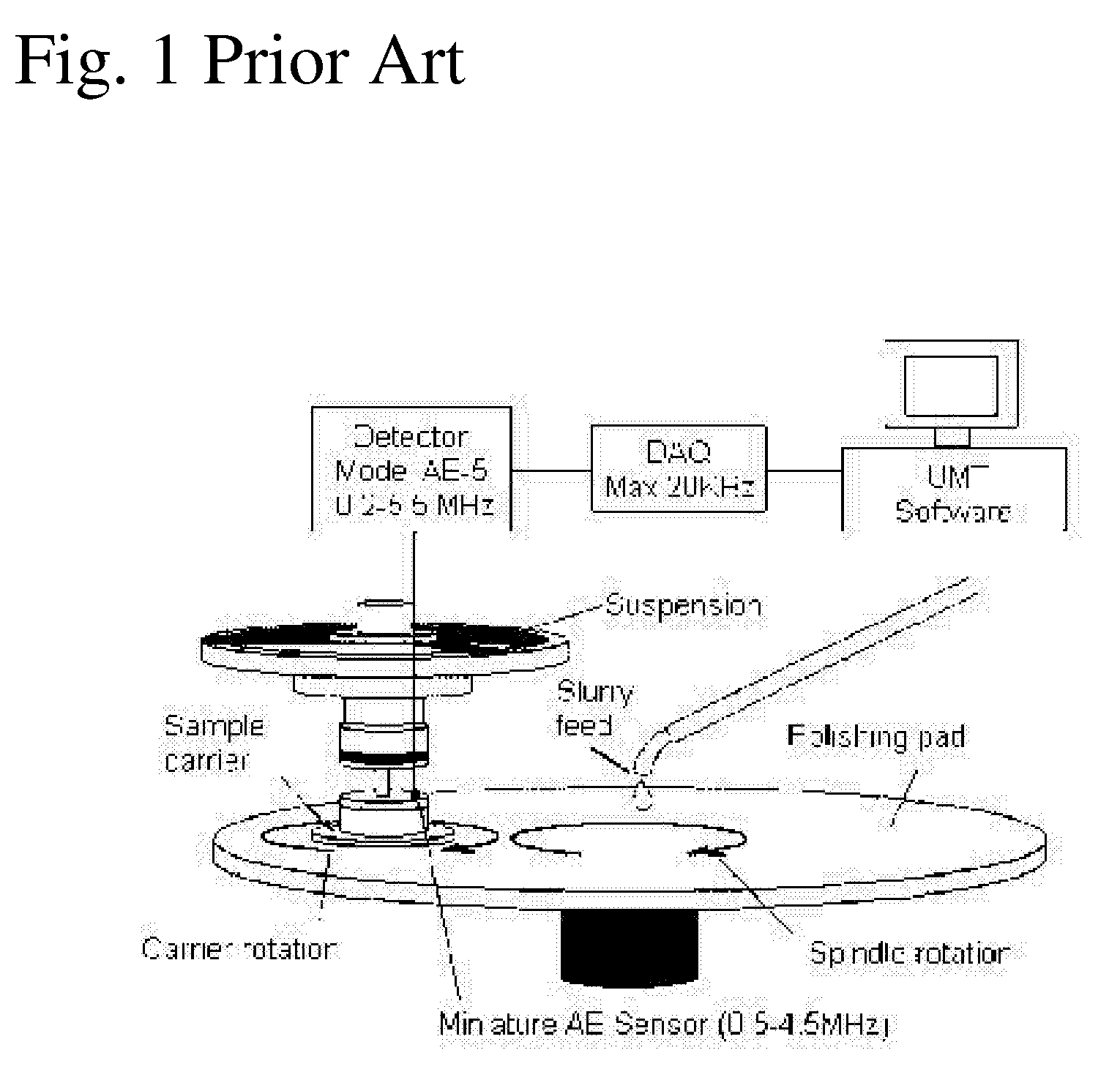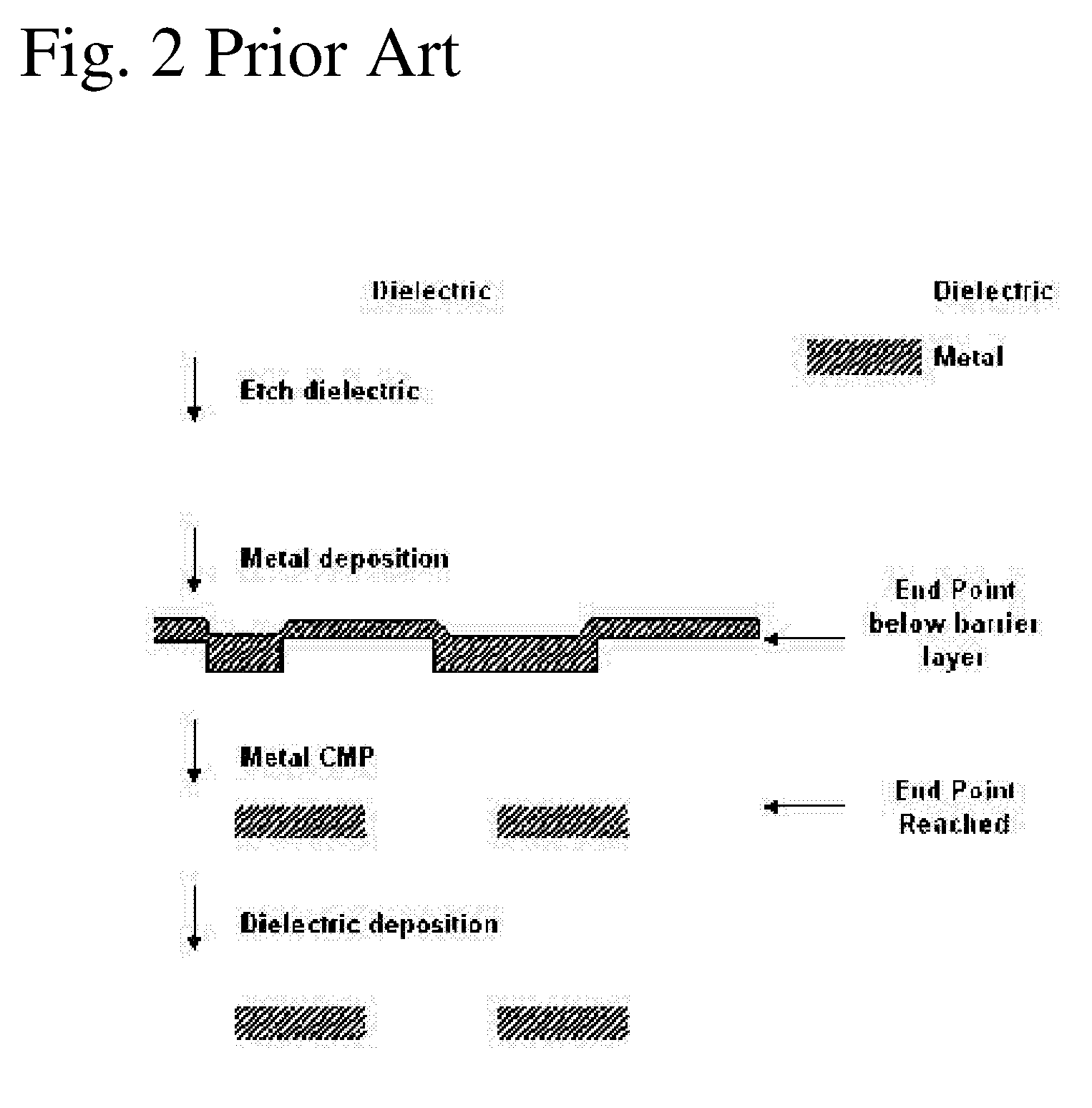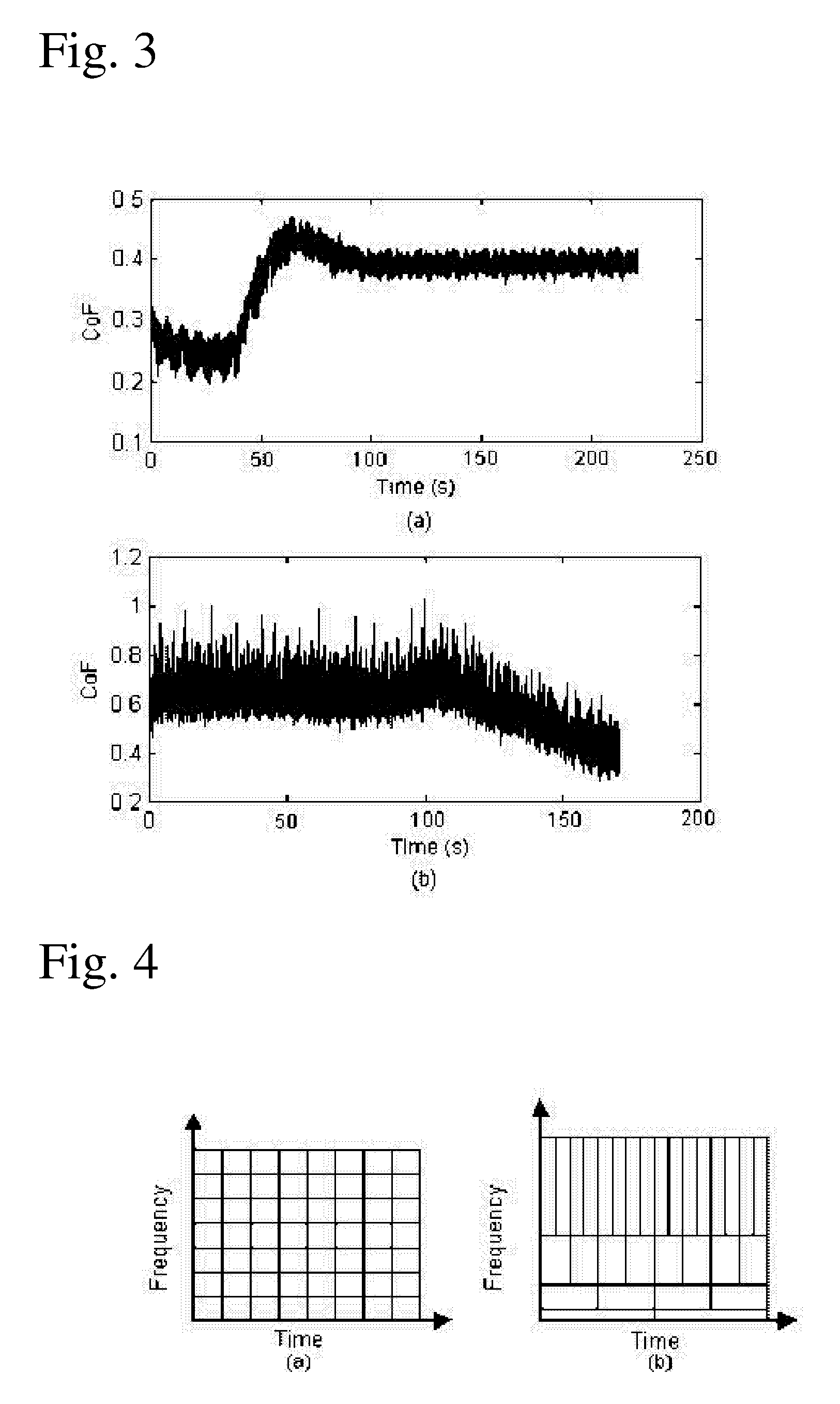System and Method for Online End Point Detection for use in Chemical Mechanical Planarization
a technology of end point detection and chemical mechanical planarization, applied in the direction of lapping machines, instruments, manufacturing tools, etc., can solve the problems the task of cmp is made more difficult, and the operation issue of epd of cmp is critical, so as to achieve robust and inexpensive
- Summary
- Abstract
- Description
- Claims
- Application Information
AI Technical Summary
Benefits of technology
Problems solved by technology
Method used
Image
Examples
Embodiment Construction
[0034] In accordance with an embodiment of the present invention is provided an online methodology for end point detection which is comprised of online CoF data decomposition followed by end point detection using a sequential probability ratio test.
[0035] Acoustic emission (AE) and coefficient of friction (CoF) sensors are known in the art to be used in process monitoring for EPD by measuring various properties including amplitude of the signal, and the frequency of the spectral peaks. Since these properties differ between materials, they can be used to detect transitions from one layer to another during CMP. The presence of noise and the need for advanced signal processing has kept these approaches from being commercially implemented. As shown with reference to FIG. 3(a) and FIG. 3(b), the CoF data collected and analyzed for EPD is sampled at a fairly high frequency (1 kHz) and is corrupted with noise. More specifically, FIG. 3(a) is a graphical illustration of raw data from an ox...
PUM
 Login to View More
Login to View More Abstract
Description
Claims
Application Information
 Login to View More
Login to View More - R&D
- Intellectual Property
- Life Sciences
- Materials
- Tech Scout
- Unparalleled Data Quality
- Higher Quality Content
- 60% Fewer Hallucinations
Browse by: Latest US Patents, China's latest patents, Technical Efficacy Thesaurus, Application Domain, Technology Topic, Popular Technical Reports.
© 2025 PatSnap. All rights reserved.Legal|Privacy policy|Modern Slavery Act Transparency Statement|Sitemap|About US| Contact US: help@patsnap.com



